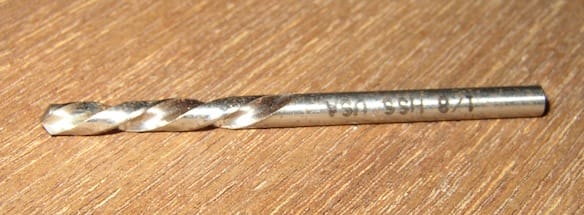
Image credit: Wikipedia.
A Drill in Hand
Whether you’re working in wood, metal, plastic, or another substance, at some point you’re going to want to put a controlled hole into it. Back in the Dark Ages before electricity and batteries, you’d have had to use an old-fashioned hand-cranked power drill. Nowadays, power drills can make easy work of the hole-drilling and screw-tightening parts of household repair, craft, and carpentry jobs.
If you’re in the market for a power drill, here’s what you should take into account in making your purchasing decision.
Battery Power or Corded?
Today’s hand drills come in two main types. One style of power hand drill is corded, which means its power comes from being attached to the wall. The other style of power drill is instead powered by a battery pack. Each offers certain advantages and disadvantages.
Because they’re tethered to the wall, corded drills offer you less mobility. However, with a long cord and operational care, you should be able to get to most places where you’ll want to drill. The loss of mobility is made up for in potential drilling power. The higher the amperage, the more power.
Cordless drills use a rechargeable battery pack for power; their power potential is measured in volts instead of amps. A cordless drill could be from as low as 6 volts for fixing door hinges up to 36 volts for drilling into steel. Remember that the battery pack will need to be recharged, which could take as little as an hour or as long as overnight. Consider purchasing an additional battery pack if necessary to insure you won’t run out of power in the middle of a long job.
Pick Your Chuck
The “chuck” is the term of art for how big the drill bit is that the drill can hold. Chuck size ranges from a quarter-inch up to a half-inch, with three-eighths as most common for most jobs. Chucks can be either keyed or keyless. Keyed chucks need a little key to tighten or loosen the drill “jaws” when you put in or take out a bit. Keyless chucks can be loosened or tightened by hand.
Speeds and Reverse
Some drills operate a fixed speed. Others allow you to raise and lower the revolutions per minute (r.p.m.) of the drill bit. Variable speed drills give you more precision for the particular substance on which you are working. Softer materials might merit a slower speed. Low speeds are good for putting in screws; higher speeds for drilling holes. If you’re going to be removing screws or bolts, you’ll want a drill with reverse capability.
The Comfort Factor
Finally, you know that ergonomics is a matter of individual taste and comfort. Some drills look like pistols. Others are “T” shaped, with the handle in the middle of the drill. If you’re going to be working in confined spaces where room is at a premium, you might want to track down a right-angle drill that’s made especially for tight work, with the handle behind an L-shaped drill unit.
In addition to the placement of the handle, watch out for the weight of the drill. You don’t want a drill that’s heavy enough to feel solid in your hands, but not so heavy that it’s uncomfortable, especially if you’re going to be using it for more than a few minutes at a time.
Conclusion
Hand drills are simple tools that can do so many jobs. You can use one to fix hinges, screw holes, hang pictures, or – with an auger bit! – plant outdoor bulbs in the autumn. With a different bit, your power drill can even function as an Allen wrench for putting together prefabricated furniture. The only limit is your imagination.



